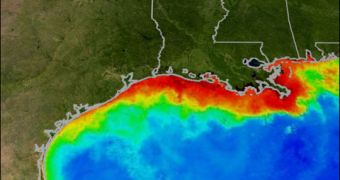On June 18, NOAA (the National Oceanic and Atmospheric Administration) announced that, according to several estimates, the dead zone expected to form in the Gulf of Mexico this summer could grow to be roughly the size of the state of New Jersey.
For those unaware, a dead zone is basically an area of water that has been depleted of all or almost all of its oxygen content.
Dead zones form whenever agricultural runoff and fertilizers make their way into oceanic waters, triggering algae blooms.
When they die, the algae inevitably begin to decompose. As they decompose, they clear the water of whatever oxygen is stored in it, thus making it impossible for fish and other marine creatures to live in it.
“Hypoxic (very low oxygen) and anoxic (no oxygen) zones are caused by excessive nutrient pollution, often from human activities such as agriculture, which results in insufficient oxygen to support most marine life in near-bottom waters.”
“Aspects of weather, including wind speed, wind direction, precipitation and temperature, also impact the size of dead zones,” NOAA explains on its official website.
By the looks of it, this year's dead zone in the Gulf Of Mexico will cover an area of about 7,286 – 8,561 square miles (18,871 – 22,173 square kilometers).
Scientists explain that it will grow to this impressive size because of the heavy rains that have recently battered the country's Midwest.
These heavy rains have fostered noteworthy water runoff, and caused impressive quantities of fertilizers and agricultural nutrients to enter the Gulf of Mexico.
As NOAA puts it, “This year’s prediction for the Gulf reflect flood conditions in the Midwest that caused large amounts of nutrients to be transported from the Mississippi watershed to the Gulf.”
Up until now, the largest dead zone to have ever been reported was the one that formed in 2002.
At that time, an area of 8,481 square miles (21,966 square kilometers) was left without oxygen following impressive algae blooms.

 14 DAY TRIAL //
14 DAY TRIAL //